-
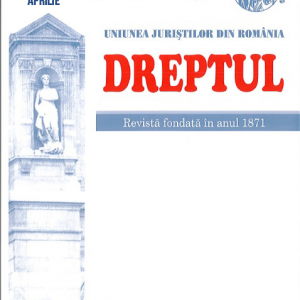 This paper is a review of the provisions set forth in Art. 216 of the Criminal Code, which focuses on questionable theoretical and practical aspects, especially on the question of criteria for distinguishing between the offences of found property appropriation and theft offences. Likewise, the author makes a comparative analysis of the provisions of Art. 216 of the Criminal Code, reported to Art. 243 of the new Criminal Code.
This paper is a review of the provisions set forth in Art. 216 of the Criminal Code, which focuses on questionable theoretical and practical aspects, especially on the question of criteria for distinguishing between the offences of found property appropriation and theft offences. Likewise, the author makes a comparative analysis of the provisions of Art. 216 of the Criminal Code, reported to Art. 243 of the new Criminal Code. -
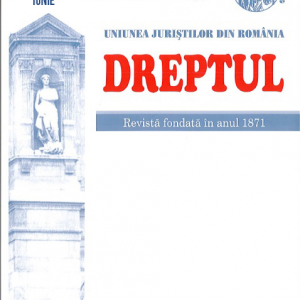 This paper deals with contesting protective measures taken during criminal proceedings at the request of the civil party. Authors consider that it is the right of the civil party to request for such measures to be taken with regard to the assets of the defendant and to those belonging to the party liable under the civil law. Moreover, the civil party can contest the manner in which the court applies this request.
This paper deals with contesting protective measures taken during criminal proceedings at the request of the civil party. Authors consider that it is the right of the civil party to request for such measures to be taken with regard to the assets of the defendant and to those belonging to the party liable under the civil law. Moreover, the civil party can contest the manner in which the court applies this request. -
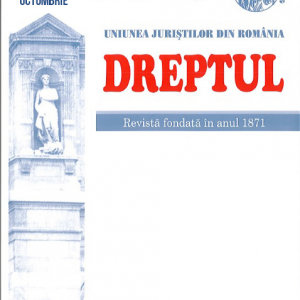 This study proposes a broader specialists’ examination of the scientific work represented by the computer program, and particularly of its usage agreement. Law no. 8/1996 regulations on copyright and related rights concerning the computer program usage agreement were investigated in relation to the rules provided for in same law and established for the patrimonial copyrights capitalization agreements and to the provisions of the Civil Code (Law no. 287/ 2009) and of the new the Civil Procedure Code (Law no. 134/2010). The paper contains the legal literature prevalent views on the computer programs usage agreement and the author’s views about some aspects of the analyzed agreement, leaving open path for research, from various perspectives, of particularly complex and evolving legal issues in the matter.
This study proposes a broader specialists’ examination of the scientific work represented by the computer program, and particularly of its usage agreement. Law no. 8/1996 regulations on copyright and related rights concerning the computer program usage agreement were investigated in relation to the rules provided for in same law and established for the patrimonial copyrights capitalization agreements and to the provisions of the Civil Code (Law no. 287/ 2009) and of the new the Civil Procedure Code (Law no. 134/2010). The paper contains the legal literature prevalent views on the computer programs usage agreement and the author’s views about some aspects of the analyzed agreement, leaving open path for research, from various perspectives, of particularly complex and evolving legal issues in the matter. -
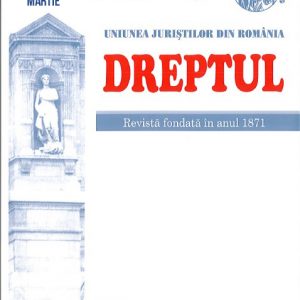 Among the measures initiated by the European bodies and subsequently taken over and adopted by the judicial authorities of the Member States to combat cross-border crime are those regarding the judicial cooperation in criminal matters referring to the tracing, identification, freezing and confiscation of proceeds, instruments and assets related to the offences committed by this kind of criminality. In this regard, the Report of the Commission to the European Parliament and to the Council on the progress made by Romania under the cooperation and verification mechanism, issued on 13 November 2018 in Strasbourg, through the Recommendation No 12, was sending to the Romanian authorities „the assurance that the National Agency for Management of Seized Assets is fully and effectively operational, so as to be able to publish the first annual report with reliable statistical information on the confiscation of assets coming from committing offences. The Agency should establish a system of regular reporting on the development of its administrative capacity, on the results obtained in the confiscation and management of proceeds resulted from committing offences”. The Romanian legislative authorities have indeed adopted the Law No 318/2015 for the establishment, organization and functioning of the National Agency for Management of Seized Assets and for the amendment and supplementation of some normative acts, law published in the Official Gazette of Romania, Part I, No 961 of 24 December 2015. This first legislative approach, however, had to be supported also by other administrative and executive formalities which involved the effective establishment, organization, functioning and operationalization of this Agency, a fact ongoing even at the date thereof. It is also noted, at the time of writing this study, that this Agency is not operational and that there are ongoing, although with big delay, some procedures for organising contests and for filling several offices therein in order to become functional. Starting from these coordinates, the article contains a brief analysis of the stage in which the Romanian authorities have complied with this recommendation, together with the relevant Romanian case law, with some of the Community norms and with the model of other European states in this matter, as well as its own conclusions necessary for an as good as possible implementation of this recommendation in the Romanian judiciary system.
Among the measures initiated by the European bodies and subsequently taken over and adopted by the judicial authorities of the Member States to combat cross-border crime are those regarding the judicial cooperation in criminal matters referring to the tracing, identification, freezing and confiscation of proceeds, instruments and assets related to the offences committed by this kind of criminality. In this regard, the Report of the Commission to the European Parliament and to the Council on the progress made by Romania under the cooperation and verification mechanism, issued on 13 November 2018 in Strasbourg, through the Recommendation No 12, was sending to the Romanian authorities „the assurance that the National Agency for Management of Seized Assets is fully and effectively operational, so as to be able to publish the first annual report with reliable statistical information on the confiscation of assets coming from committing offences. The Agency should establish a system of regular reporting on the development of its administrative capacity, on the results obtained in the confiscation and management of proceeds resulted from committing offences”. The Romanian legislative authorities have indeed adopted the Law No 318/2015 for the establishment, organization and functioning of the National Agency for Management of Seized Assets and for the amendment and supplementation of some normative acts, law published in the Official Gazette of Romania, Part I, No 961 of 24 December 2015. This first legislative approach, however, had to be supported also by other administrative and executive formalities which involved the effective establishment, organization, functioning and operationalization of this Agency, a fact ongoing even at the date thereof. It is also noted, at the time of writing this study, that this Agency is not operational and that there are ongoing, although with big delay, some procedures for organising contests and for filling several offices therein in order to become functional. Starting from these coordinates, the article contains a brief analysis of the stage in which the Romanian authorities have complied with this recommendation, together with the relevant Romanian case law, with some of the Community norms and with the model of other European states in this matter, as well as its own conclusions necessary for an as good as possible implementation of this recommendation in the Romanian judiciary system. -
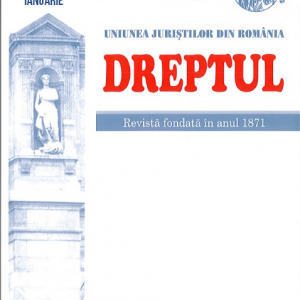 In this article the author raises for discussion some theoretical and practical issues referring to the judicial control and to the judicial control on bail, preventive measures which have been regulated in this form in the new Criminal Procedure Code, focusing on how they are implemented, in order to avoid some errors or confusions related to their interpretation and application.
In this article the author raises for discussion some theoretical and practical issues referring to the judicial control and to the judicial control on bail, preventive measures which have been regulated in this form in the new Criminal Procedure Code, focusing on how they are implemented, in order to avoid some errors or confusions related to their interpretation and application. -
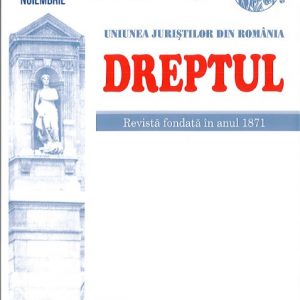 Within this paper, the author makes a thorough analysis of the offence regulated by Article 277 of the Criminal Code, starting with the reason of incrimination and presenting in detail the constitutive elements of this new offence. To this end the author often makes reference to the provisions of the Statement of reasons of the Law No 286/2009. At the same time, the author confers a particular importance to establishing the existing relations between the offence provided by Article 277 of the Criminal Code and those regulated by Article 12 point 2 of the Law No 78/2000, by Article 269 of the Criminal Code, respectively.
Within this paper, the author makes a thorough analysis of the offence regulated by Article 277 of the Criminal Code, starting with the reason of incrimination and presenting in detail the constitutive elements of this new offence. To this end the author often makes reference to the provisions of the Statement of reasons of the Law No 286/2009. At the same time, the author confers a particular importance to establishing the existing relations between the offence provided by Article 277 of the Criminal Code and those regulated by Article 12 point 2 of the Law No 78/2000, by Article 269 of the Criminal Code, respectively. -
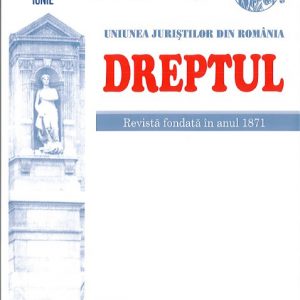 The study intends to provide an overview of a recently established public institution, namely the National Agency for the Administration of Seized Assets. Its establishment was an objective included in the National Anti-corruption Strategy for 2012–2015, approved by the Government Decision No 215/2012. The analysis will focus on aspects concerning its general status, structure, personnel and it will be made from a critical perspective on some legal provisions inclusively. In this way, we will try to draw attention to some deficiencies of the regulation, by proposing solutions which hopefully will be considered in the future.
The study intends to provide an overview of a recently established public institution, namely the National Agency for the Administration of Seized Assets. Its establishment was an objective included in the National Anti-corruption Strategy for 2012–2015, approved by the Government Decision No 215/2012. The analysis will focus on aspects concerning its general status, structure, personnel and it will be made from a critical perspective on some legal provisions inclusively. In this way, we will try to draw attention to some deficiencies of the regulation, by proposing solutions which hopefully will be considered in the future. -
 In this study, the author carries out a detailed analysis of the content of the offence regulated by art. 2803 of Law no. 31/1990 on companies, as republished, subsequently amended and supplemented, criticizing a series of opinions expressed in the specialty literature regarding the constituent elements of this offence. In the last part of the publication, the author raises the question of autonomy of the examined offence as compared to the offence regulated under art. 291 of the Criminal Code (art. 323 of the new Criminal Code), proposing certain criteria for the classification of these two offences.
In this study, the author carries out a detailed analysis of the content of the offence regulated by art. 2803 of Law no. 31/1990 on companies, as republished, subsequently amended and supplemented, criticizing a series of opinions expressed in the specialty literature regarding the constituent elements of this offence. In the last part of the publication, the author raises the question of autonomy of the examined offence as compared to the offence regulated under art. 291 of the Criminal Code (art. 323 of the new Criminal Code), proposing certain criteria for the classification of these two offences. -
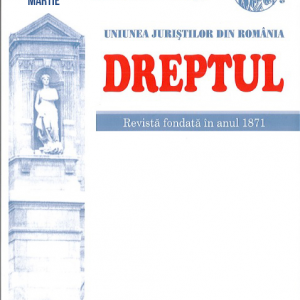 At first sight, guilt appears as being one of the necessary conditions for engaging liability, which is quite easy to determine. In fact, in order to make such a statement it must be considered the structure of guilt, formed not only of the intellective and volitive factors that make up the complex psychological process which stands at the origin of the illicit activity, but also the imputation which can be brought to the agent for a conduct inconsistent with the rigours imposed by the legal order. By the analysis made, the author of this study has emphasized both the strengths, and the disadvantages of the criteria subjectively, objectively and even intermediately used for determining the civil guilt in concrete situations. Likewise, he has also dealt with the possibility of determining the criminal guilt in the light of the psychological and normative conceptions. At the same time, by expressing his options for some of these, the author has proposed some nuancings in order to obtain some results as precise as possible and, at the same time, fair for all parties involved.
At first sight, guilt appears as being one of the necessary conditions for engaging liability, which is quite easy to determine. In fact, in order to make such a statement it must be considered the structure of guilt, formed not only of the intellective and volitive factors that make up the complex psychological process which stands at the origin of the illicit activity, but also the imputation which can be brought to the agent for a conduct inconsistent with the rigours imposed by the legal order. By the analysis made, the author of this study has emphasized both the strengths, and the disadvantages of the criteria subjectively, objectively and even intermediately used for determining the civil guilt in concrete situations. Likewise, he has also dealt with the possibility of determining the criminal guilt in the light of the psychological and normative conceptions. At the same time, by expressing his options for some of these, the author has proposed some nuancings in order to obtain some results as precise as possible and, at the same time, fair for all parties involved. -
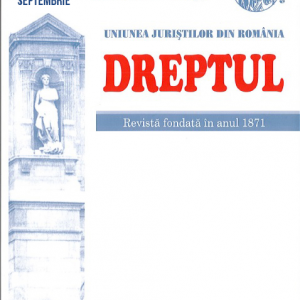 This article examines the legal protection of individuals from listening, disclosure or transmission of private conversations or confidential or personal audio-visual information, and comparatively analyzes regulations in matters of private life from different European criminal codes. Regulating the offense of private life violation was absolutely necessary, both to complete the criminal protection framework of the values guaranteed by Article 8 of the (European) Convention on Human Rights and Fundamental Freedoms, as the offense is not known in Romania, and to achieve interference between the concept of private life and personal privacy in the context of excessive public dissemination of private life.
This article examines the legal protection of individuals from listening, disclosure or transmission of private conversations or confidential or personal audio-visual information, and comparatively analyzes regulations in matters of private life from different European criminal codes. Regulating the offense of private life violation was absolutely necessary, both to complete the criminal protection framework of the values guaranteed by Article 8 of the (European) Convention on Human Rights and Fundamental Freedoms, as the offense is not known in Romania, and to achieve interference between the concept of private life and personal privacy in the context of excessive public dissemination of private life. -
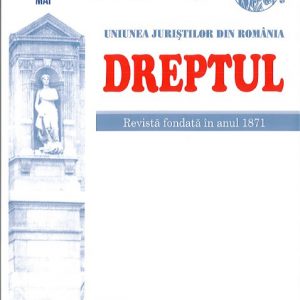 The purpose of this paper is to offer the reader a brief incursion in the procedure of expropriation for cause of public utility, necessary to achieve some objectives of national, county and local interest, as it is regulated by the Law No 255/2010, as amended and supplemented. In this regard, the paper contains references to the relevant national case law, but also to the Norms of application of the Law No 255/2010, as well as to the applicable civil processual provisions, where appropriate.
The purpose of this paper is to offer the reader a brief incursion in the procedure of expropriation for cause of public utility, necessary to achieve some objectives of national, county and local interest, as it is regulated by the Law No 255/2010, as amended and supplemented. In this regard, the paper contains references to the relevant national case law, but also to the Norms of application of the Law No 255/2010, as well as to the applicable civil processual provisions, where appropriate. -
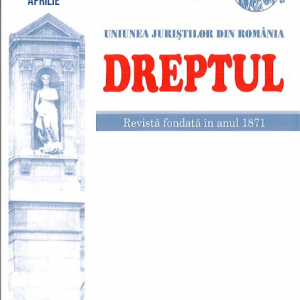 This study focuses on the analysis of a rule of incrimination included in Article 190 of the new Criminal Code of Romania and entitled „killing at the victim’s request”. Naturally, the monographic research of this rule is set within the broader framework of the phenomenon of euthanasia, a phenomenon often subject to heated controversies in the criminal legal doctrine and that receives differentiated approaches brought by the multidisciplinary perspective they generate.
This study focuses on the analysis of a rule of incrimination included in Article 190 of the new Criminal Code of Romania and entitled „killing at the victim’s request”. Naturally, the monographic research of this rule is set within the broader framework of the phenomenon of euthanasia, a phenomenon often subject to heated controversies in the criminal legal doctrine and that receives differentiated approaches brought by the multidisciplinary perspective they generate.
